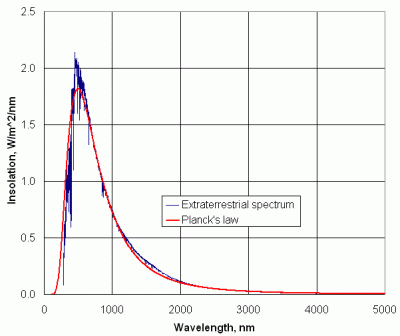I know your answer is Yellow but that's the wrong answer :)
YES! NASA DECLARED SUN IS WHITE :)
Everyone knows the sun is yellow, It’s right there in the sky; you just have to look to know this (OK, don’t really look at the sun…). Well…not so fast. It turns out that there are many absolutely correct and absolutely different answers to this seemingly simple question.
Our perception of color is influenced by, of course, the wavelength of the emitted light, the intensity of the emitted light, environmental factors, the ability and limitations of our eyes to collect light, and finally, our brains. So, let’s begin with the wavelength of light.
Credit to NASA
The color of the sun is white. The sun emits all colors of the rainbow more or less evenly and in physics, we call this combination "white". That is why, when the natural world is illuminated by sunlight, we can distinguish so many various hues. Everything outside would appear green or dark if the sunlight were only green. Because sunlight contains both red and blue light, we can see the redness of a rose and the blueness of a butterfly's wing. The same is true of all other hues. A white bulb, not a yellow one, is created when a light bulb engineer creates a bulb that is meant to resemble the sun and hence produce natural illumination.
The fact that a rainbow, which is simply sunshine separated by cloud, contains all the primary colors and none are absent is clear proof that sunlight is white.
The sun emits all visible light hues, as well as all electromagnetic wave frequencies except for gamma rays. This covers X-rays, radio waves, microwaves, infrared waves, visible light, and other electromagnetic waves. Because the sun is a thermal body and emits light by thermal radiation, it emits all these colors. The sun glows in all colors due to its temperature, just like hot coal or an electric stove element.
Because they include metal filaments that are heated until they glow similarly to the sun, incandescent light bulbs emit light that closely resembles sunlight.
It can be alluring to look at the color composition of sunlight and declare the color with the highest peak frequency to be the hue of the sun. The issue with this strategy is that peak frequency lacks a clear definition. The graphics below illustrate how the peak frequency varies depending on whether you are in frequency space or wavelength space. Sunlight has a peak in the violet region of the spectrum. Sunlight has its highest frequency in the infrared. Which is accurate? They both have a point.
Simply said, they are two distinct but equally legitimate methods of determining color content. And this demonstrates why it is quite pointless to attribute special significance to the peak frequency. Furthermore, although it is not, astronomers frequently model the sun as a perfect blackbody. The sun's peak is green, according to the wavelength-space blackbody model! When astronomers claim that the sun is green, they actually imply that their approximate model has a green wavelength peak. The sun is white and would peak in the green if it were a perfect blackbody and if you measured in wavelength space, but "The sun is Green!" makes for less thrilling headlines.
Conclusion
Resources: eclipse2017.nasa.gov , wtamu.edu





Post a Comment